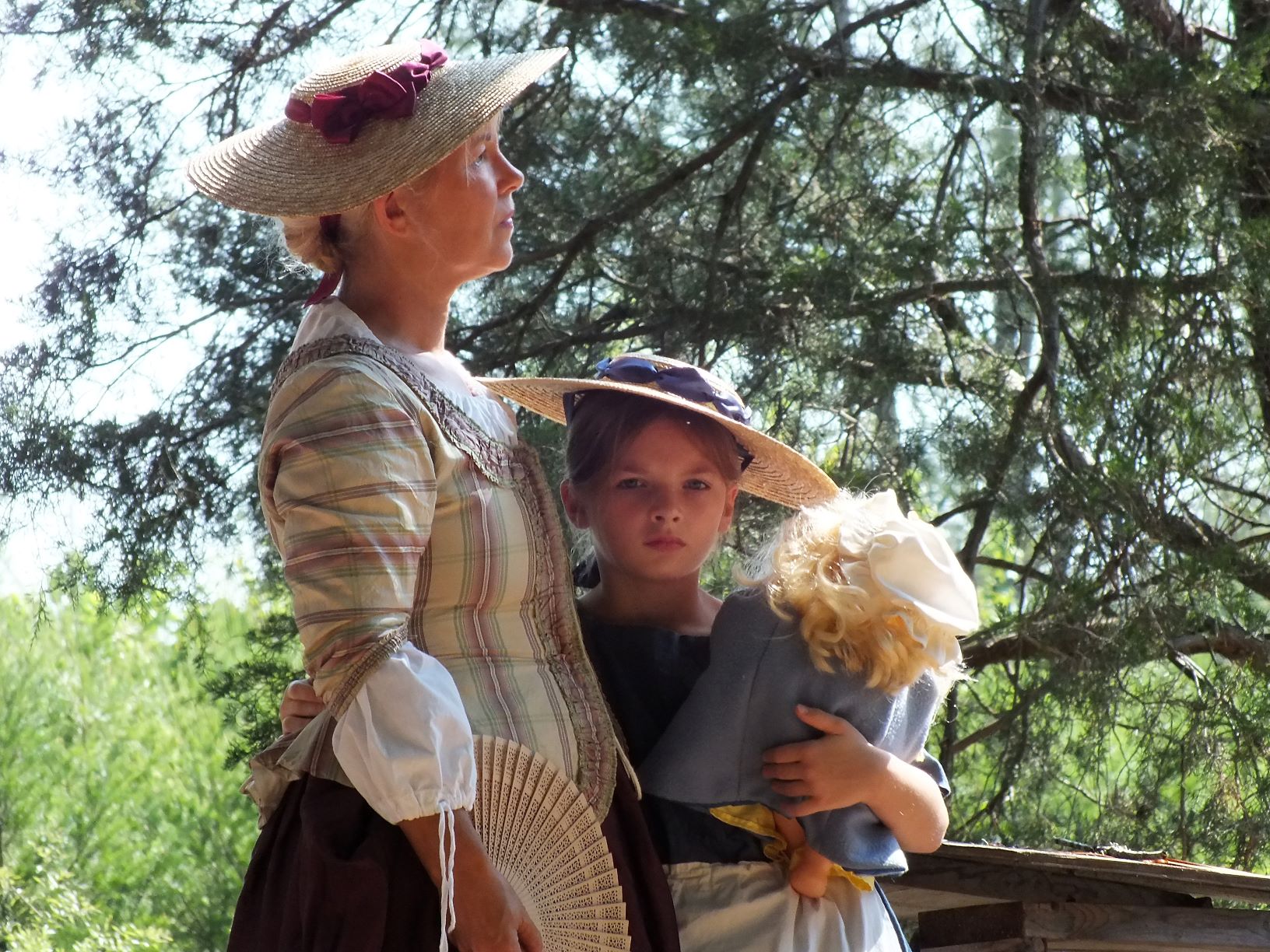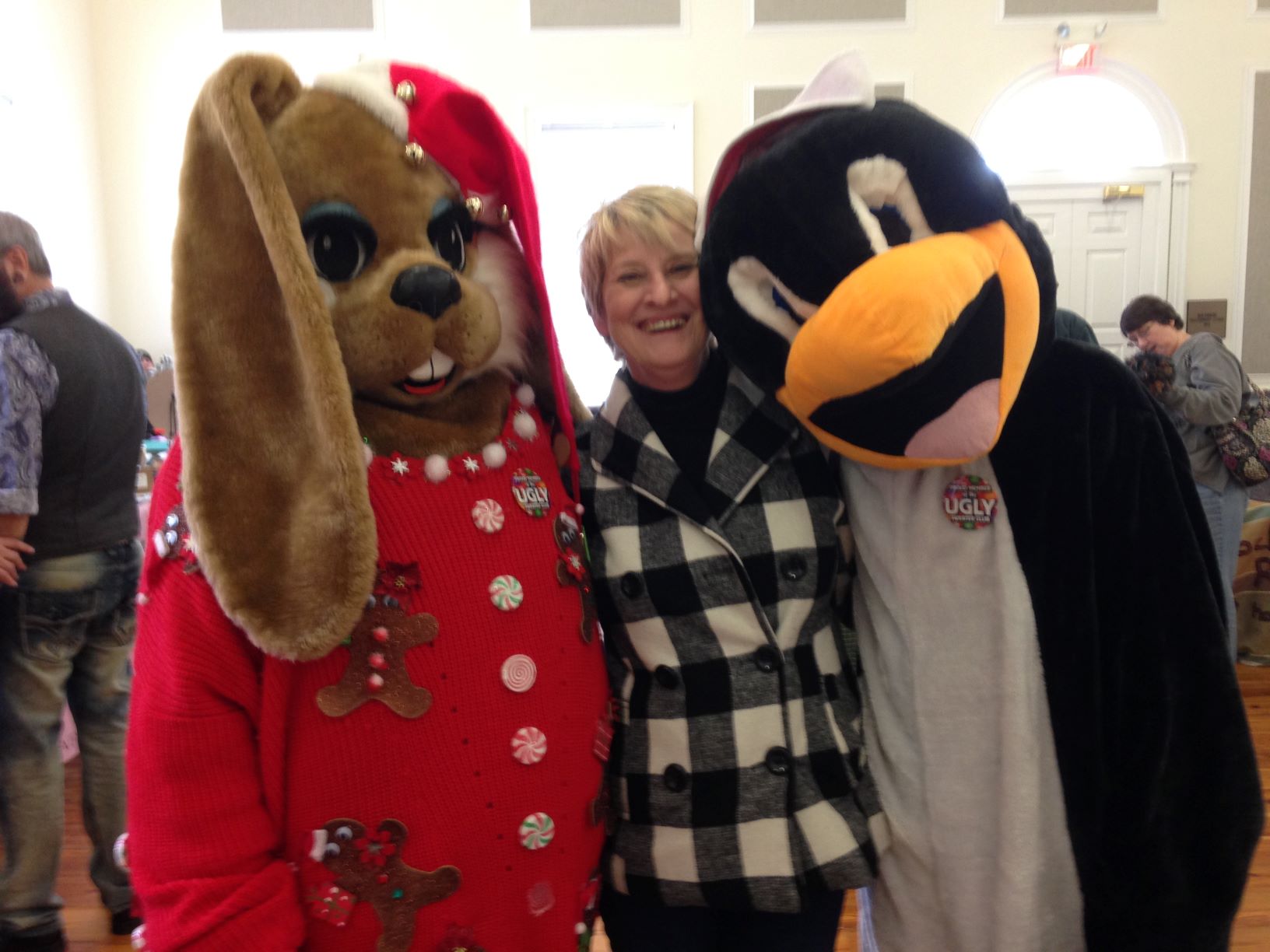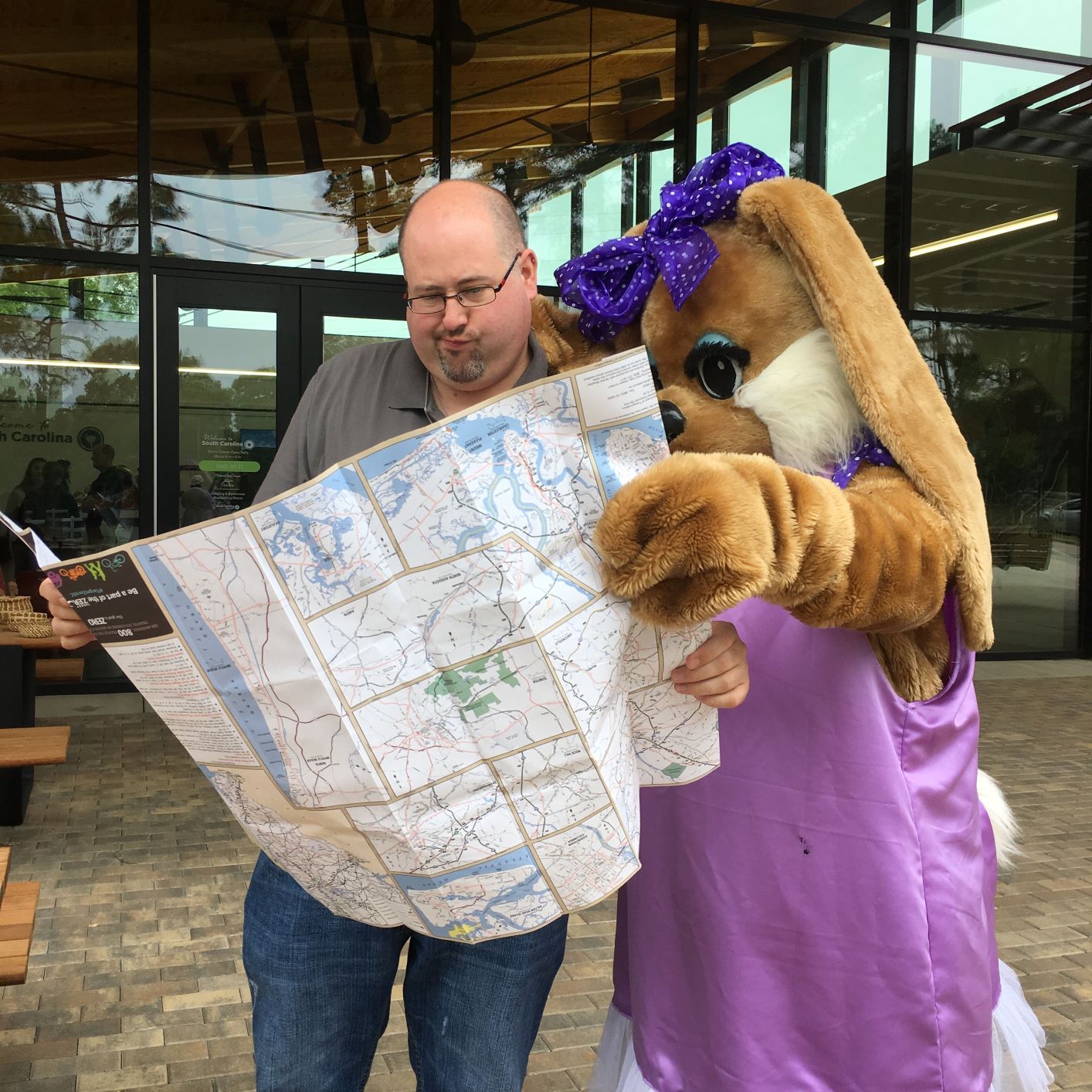Arts and culture means more to cities and towns than just pretty paintings or music events held on Main Street. Incorporating arts and culture into a city's economic development strategy is critical to recruiting and retaining businesses.

LeighAnn Snuggs, City of Gaffney's marketing and tourism director, occasionally dresses in Revolutionary War-period clothing for reenactments that tell the city's story. Photo: Rodger Painter.
For those who work in the arts and culture in municipalities, days are filled with booking vendors for festivals, setting up art galleries, designing murals and promoting the area's history to tourists. Arts and culture specialists say they are driven by what the arts can bring to towns of every size, including its economic development efforts.
"It's usually hectic, but it's never boring," said LeighAnn Snuggs, the marketing and tourism director for the City of Gaffney.
There's also crucial commerce at stake.
"Downtown activities like retail events are designed to promote downtown's unique products and services which generate immediate retail sales," said Jenny Boulware, Main Street SC manager for the Municipal Association.
"Special events are also key traffic-building activities that help shape community interest and participation downtown."
Take Gaffney: Snuggs also serves as the director of Gaffney's Main Street Program, so her job includes managing the farmers market, running the downtown events, overseeing the visitors center and art gallery, and dressing in Revolutionary War-period clothing for reenactments that tell the town's story. She wears a lot hats — or, as she describes it, an umbrella with many different colored panels. And all of these hats help support the city's economic development efforts through promoting the city to locals and visitors alike.
That can mean catering to Revolutionary War history buffs (the area is home to Cowpens National Battlefield and Kings Mountain National Military Park) or fans of the Netflix "House of Cards" series (fictional Congressman Francis Underwood hails from Gaffney). Visitors also come to see the giant peach water tower or shop at the outlet stores or tour Limestone College.
"For me, with our heritage, it's all about telling the story," Snuggs said. "Everything we do here is finding that connection, that common ground tying us in to the interests of people."
Main Street programs, like those in the cities of Gaffney and Lancaster and the Town of Williamson, play a pivotal role in identifying downtown opportunities and bringing together groups and individuals. Main Street recenters downtown as important and unique.

Cherry Doster has been the marketing and development manager for See Lancaster SC,
the city's Main Street Program, since 2011. Photo: City of Lancaster.
"A healthy downtown is crucial to the heritage, economic strength and civic pride of the entire community. Infusing arts and activities downtown indicates a community's investment in quality of life, a single factor that often influences corporate location decisions," said Bouleware. "The Main Street program is a comprehensive approach to revitalization. It addresses image, focuses on quality and stresses incremental, steady improvements."
Partnerships count
Snuggs often sends people to Rock Hill or Spartanburg County or Camden to see other Revolutionary War areas.
"At the same time, the stories they get from me are not the same stories they'll get in my neighbor's backyard," she said.
Snuggs also believes in the importance of arts leaders building partnerships with other entities — whether that's a history museum or the National Park Service. "When you are small you can do big things with partners," she said.
Many of Gaffney's residents are well-versed in the town's heritage and serve as proud ambassadors for the community.
"A city itself is just a city," said Joe Timmons, events and promotion manager for the City of Lancaster. "If you walk down the street and there's not color on the street, it's bland. If there are flowers, displays, architecture — all of that is an art form," Timmons said. "And art brings in jobs. If you don't have pretty stuff in your city, people aren't going to want to work there."

Joe Timmons is the events and promotions manager for the City of Lancaster. Photo: City of Lancaster.
Art in Lancaster, which has a cultural arts district designated by the SC Arts Commission, can take the form of the annual scarecrow contest on Main Street or the photography exhibit at the city's signature Red Rose Festival.
Cherry Doster has been the marketing and development manager for See Lancaster SC, the city's Main Street Program, since 2011. Previously, she was a managing partner in an arts business, founder of a nonprofit arts agency and executive director of Lancaster County Council for the Arts. In her current role, she focuses on tourism, revitalization, beautification, historic preservation and a creative economy.
"The obvious ways that art and culture offerings add to cities are often found in the form of public art exhibitions or areas that are revitalized through additions of amphitheaters and performing arts centers," Doster said.
"The intrinsic value is not always visible but powerful."
Thriving residents, workers
Doster said creative businesses play a major part in the local economy and foster a workforce comprised of those practicing the arts in all forms.
The value is in direct economic impact but also in creating reasons for residents to get involved in their communities. The result? A place where residents want to live, work and gather, and where tourists want to visit.
"On a daily basis, I approach the arts as an essential part of our city's identity, with the ideology that successful development of a creative economy supports local arts and culture," she said.
"When we are working to improve economic and development initiatives in our city, using every available asset, including the arts, is necessary to make that happen."
Sonya Crandall, the executive director of Envision Williamston, is in her fourth year working on expanding the arts and beautifying the Anderson County town. Part of her job entails extending the focus of the Main Street program beyond the downtown business district to include all of the community.

Local artist Carter Boucher paints scenes from the evening during
Williamston's Fall Jazz Concert Series. Photo: Town of Williamston.
"Envision Williamston does economic and community development, and arts and culture are a part of the identity and attachment to the town," she said.
Among the recent projects she has juggled was a mural competition, designed with the help of the high school art teacher. A dozen artists created proposals that looked at the history of the town, particularly its mineral springs. The three winners are creating their work on wooden panels that will be erected on buildings in different parts of the town. And the high school art students are implementing the design.
Crandall is also working on a mobile app for the town, showing everything from arts and crafts to community theatre to a historical walking tour.
"Arts, culture, health, wellness and jobs are all important to a high quality of life, and we need diverse participation from all sectors," Crandall said. "Thinking about how we can work together can be a challenge, but once we bring creative energies together through a common goal we can see how it flourishes."
The "Day in the Life" series gives an insider's look at the professions that make South Carolina cities and towns great places to live, work and play. Municipal employees from around the state explain their role, discuss challenges they face and share stories from the unique world of municipal government.
